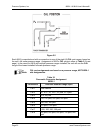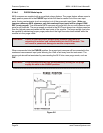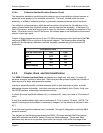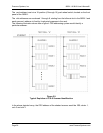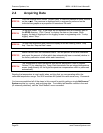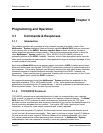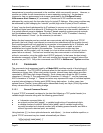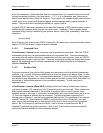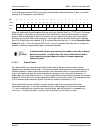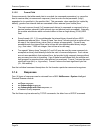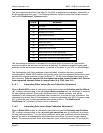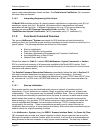
Pressure Systems, Inc. 98RK-1 & 9816 User’s Manual©
Page 30 www.PressureSystems.com
Chapter 3
Programming and Operation
3.1 Commands & Responses
3.1.1 Introduction
This chapter describes all commands a host computer program may send to each of the
NetScanner
™
System Intelligent Pressure Scanner modules (Model 9816) that are connected
to the various slots of the 98RK-1 Scanner Interface Rack chassis, as well as the data or
status responses returned by these modules. Some of the commands are similar to those for
other NetScanner
™
System models (e.g., 903x, 9016/9116 or 9021/9022) that may be
externally attached to the 98RK-1 chassis. However, refer to their appropriate users’ manuals
since some commands are model-specific. Most applications require working knowledge of only
a small number of commands.
Each internal Model 9816 pressure scanner module (mounted in 98RK-1 chassis slots) has an
Ethernet interface and uses layered TCP/UDP/IP transmission protocols to communicate with a
host computer. These same protocols (and Ethernet interface) are also used for any externally-
connected scanner or standard/calibrator modules (connected to the 98RK-1 chassis rear
connectors). These modules are all “networked” together (with a host computer) via the 12-port
Ethernet gigabit switch (inside the 98RK-1 chassis).
All commands/responses to and from NetScanner
™
System modules are embedded in the
data fields of either a TCP or UDP packet header. In turn, these packets are themselves
embedded in the data field of an IP packet header — which is embedded in the data field of an
Ethernet packet header. Thus, the term layered protocols.
3.1.2 TCP/UDP/IP Protocols
TCP/UDP/IP protocols are a well-established set of rules for communicating over a network
(LAN, intranet, or internet), and are independent of the network’s physical medium. The Model
9816 uses the TCP/IP protocols for most commands and responses since the TCP layer
provides a robust error detection and correction mechanism, but requires the establishment of a
formal connection between host and module. The simpler UDP layer, requiring no formal
connection, is utilized for a few simple commands and a query response.
Using the underlying basic IP protocol, the host computer and interconnected modules are all
“peers” that can all communicate equally. Each “peer” must have a unique “logical” IP Address
(as well as its own unique “physical” Ethernet Address) to be directly addressed. Any “peer”
may initiate transmissions without permission from the receiver. In NetScanner
™
System
implementation, the host computer is normally a client and generally initiates most




